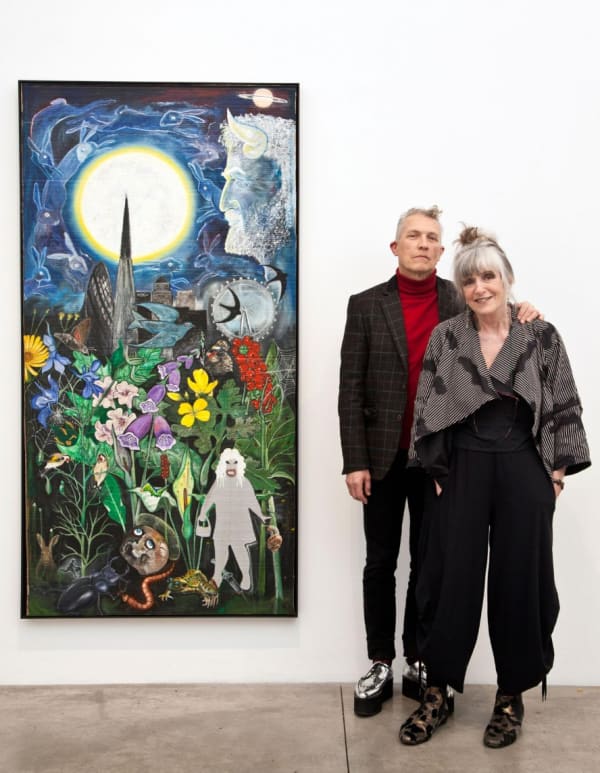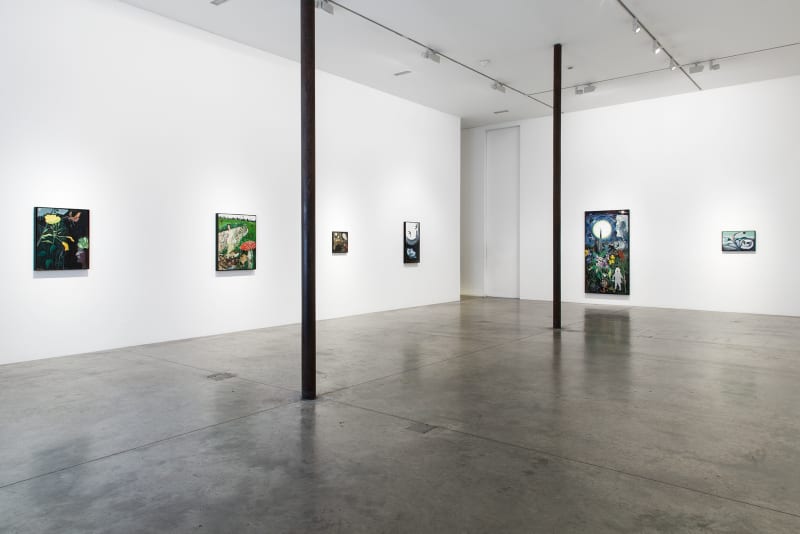David Harrison: Flowers of Evil
In David Harrison’s third solo show with the gallery, a selection of new work presents a densely populated and fully realised universe, where the supernatural pull of the natural world is intertwined with a keen sense of modern civilisation’s insensitivities.
Foxglove, Belladonna and Wolfsbane fairies are among the cast of potent female characters at the heart of this body of work. Though they might be distant relatives to the flower fairies of twentieth century artist Cicely Barker, who envisioned the flora native to English hedgerows and meadows as prepubescent children, Harrison’s exuberantly unsafe anthropomorphised flowers epitomise the threat of danger that makes modern society increasingly uneasy. Marginalised by sanitised landscapes in which barren office blocks and bland housing estates proliferate – peopled by briefcase-touting unprincipled property developers, trapped workers and disenfranchised youths – their luxuriant groves are at best surveyed from the safe remove of a bedroom window. The mutual effects of this estrangement resonate throughout Flowers of Evil, The Nature of Chaos, 2015, in which nature’s rhythms, the migratory paths of birds and life-cycles of insects, are thrown off-balance by pervasive wireless signals, and the threatened collapse of drained marshland on which a group of executive homes has been built is symbolised by an apocalyptic river of blood.
-

David Harrison features in Common Ground at The Wilson, Cheltenham
February 21 2025Curated by painter and folklorist Ben Edge, the exhibition (on view until 31 August 2025) invites visitors to explore stories of change, loss, rebellion, and...Read More -

How we met: David Harrison & Lucinda Lambton in The Independent
November 29 2015David Harrison & Lucinda Lambton: 'She came to my council flat and I nearly killed her with a leopard-skin sofa'. By Adam Jacques. The duo...Read More


